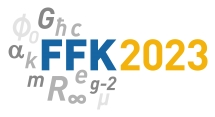Speaker
Description
The ASACUSA-Cusp experiment aims to perform spectroscopy of the hyperfine structure of antihydrogen by producing a beam of cold, spin polarised, ground state antihydrogen. The beam will be produced by mixing positrons and antiprotons in our unique Cusp trap which uses a pair of superconducting coils in an anti-Helmholtz configuration to produce a magnetic field capable of both confining the charged particles radially and polarizing the antihydrogen atoms.
Thus far, the collaboration has observed antihydrogen 2.7 m from the production region and measured the distribution of principal quantum number of these atoms. This weak beam was not suitable for the spectroscopy measurement so work commenced on improving the beam intensity and skewing the distribution towards ground state atoms. Simulations showed that the route towards this aim was producing colder dense positron plasmas.
Recently, a major technological milestone was achieved by the collaboration. Antihydrogen produced via three-body recombination will have an isotropic distribution so a large open solid angle is needed for the antiatoms to escape. This has the disadvantage that the production region is illuminated by a hot (300 K) black body. Previously, it has not been possible to cool plasma below 130 K, however, a new electrode stack and coldbore with a focus on blocking microwaves from the room temperature region has allowed particles to cool to 25 K maintaining the large open solid angle for the beam to escape.
In this presentation I will discuss the methods used by the ASACUSA Cusp experiment to manipulate and control positrons and give details on the most recent work on plasma handling and beam production in the new Cusp trap.
